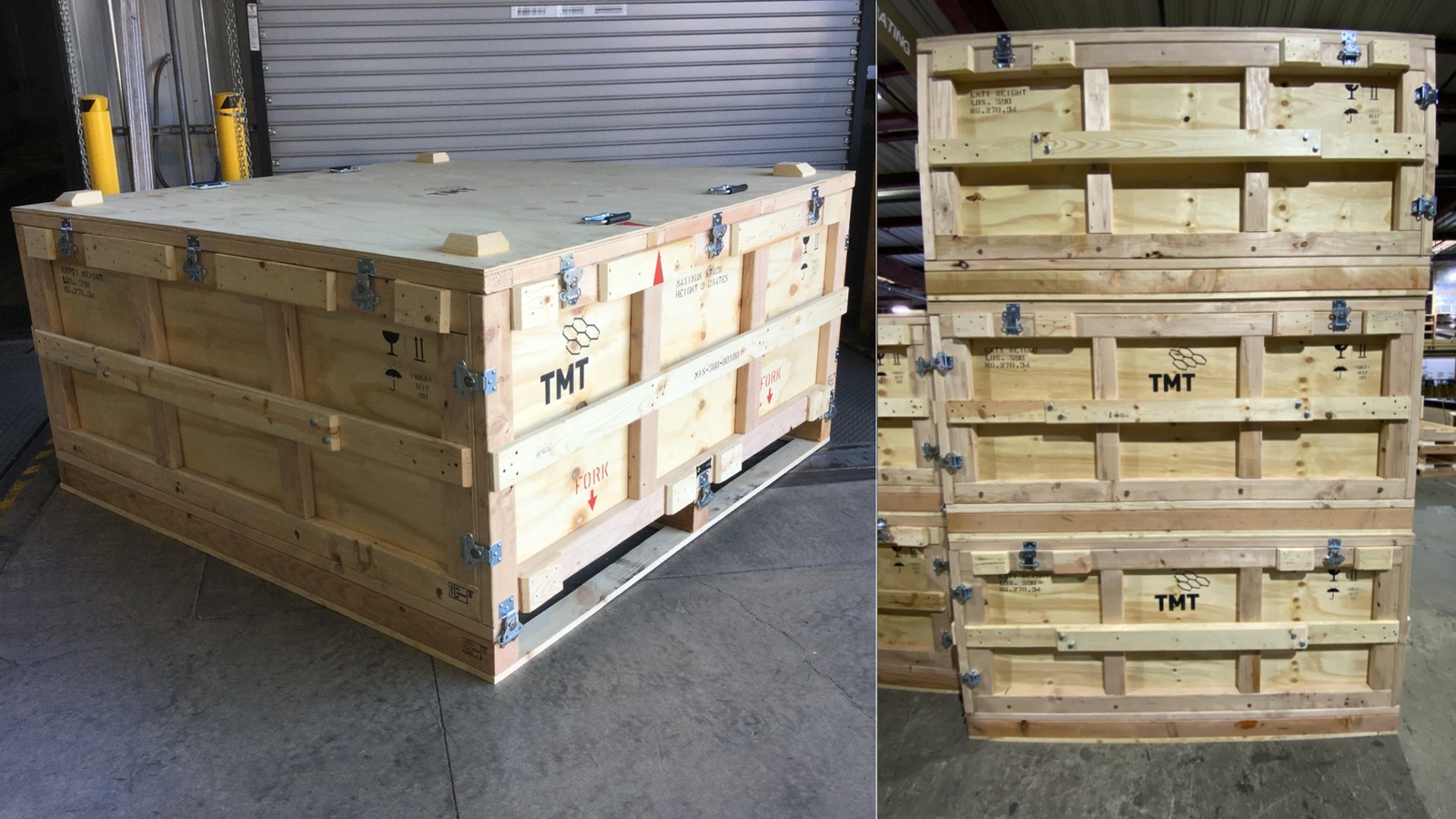TMT Mirror Segment Shipping Container designed to survive a 200 year earthquake
30 August 2023

The custom packaging project consisted of 574 TMT Primary Mirror Segments and 82 spare segments, each requiring its own dedicated crate capable of withstanding at least three long trips through its lifetime, totalling more than 1,700 separate journeys, including final transportation to the site.
The TMT Project (the “Project”) is a collaboration of the California Institute of Technology, the University of California, the Association of Canadian Universities for Research in Astronomy, the National Astronomical Observatory of Japan, the Department of Science and Technology of India, and the National Astronomical Observatories of China.
It’s mission is to construct and operate a 30-metre optical and infrared telescope.
The project consisted of 574 TMT Primary Mirror Segments and 82 spare segments, each requiring their own dedicated crate capable of withstanding at least three long trips through its lifetime, totalling more than 1,700 separate journeys, including final transportation to the site.
The shipping container had to meet strict shock and vibration criteria to protect the valuable and sensitive equipment. Under any combination of transport conditions, the crate had to:
- Protect from acceleration and shock of greater than 24g in the vertical direction and 24g in the horizontal direction.
- Withstand a rotational drop of 229 mm (9”) on concrete without imparting more than 7g in the vertical direction and 3.6g in the horizontal direction
- Withstand a rotational drop of 229 mm (9”) on concrete without imparting more than 24g to the segment load.
- Provide ingress protection to a rating of IP 54 (RD11) against dust and splashing water.
- Limit the loads that the MSA will experience during a 200 year earthquake, to 7g in the vertical direction and 3.6g in the horizontal direction.
- Be designed to be loaded and unloaded in less than 1 hour.
- Adaptable to ship both SSA and PMA assemblies.
- Conversion between SSA and PMA mode and vice versa, shall take less than 60 minutes (requiring maximum 2 technicians).
Solution
LPC worked closely with all stakeholders to design, test and then manufacture a shipping container that met all the exacting shipping requirements.

Central to the design was the use of a floater base with six wire rope isolators that serve as cushioning system to restrain vibration and shock stress to provide significant dampening for the extremely fragile TMT segment due to its size, weight, and fragility.
The container was also designed to enable segments to mount on a stable metal frame face downward and secured by three custom metal brackets within the wood container for added shock and vibration protection.
Careful attention was paid in the design of the container to protect the sensitive equipment from dust and splashing water. Data loggers with extra-long battery life were mounted into the container and on the segment to monitor and record the environment’s shock amplitude, temperature, and humidity during transport and storage. The equipment was placed in a reusable moisture and anti-corrosion barrier bag made of Intercept fabric to seal and prevent the corrosion process and help keep the parts clean, dry and ready for use upon removal from the packaging.
Clever design ideas such as the ability to open the container from both the top and front sides and the need for few tools for assembly and disassembly ensured that the crate could be loaded and unloaded by two people well under the design brief’s stipulated 60 minutes. The container’s unique design also provided the high degree of flexibility required to accommodate TMT’s needs, with a positioning frame that could be used with different specific configurations.
The exterior design of the container allowed the containers to be stacked three high to form a single unit and then bolted together for added stability and loading convenience.
A series of iterative tests including vertical drop, side impact and vibration tests, were conducted at LPC and an independent testing facility to assess the prototype’s capability and quality before full-scale manufacturing. These tests included a significant violent crash impact of four meters per second to record the level of protection offered by the container housing the extremely fragile equipment and a complete final test campaign using a full-size dummy primary mirror and support assembly.
Outcome
The client project team was delighted with the final result. The container designed and manufactured by Larson Packaging Company met—if not exceeded— the brief criteria and was completed on-time and to budget.
The shipping container has successfully been used in real-life shipping environments with the sensitive equipment arriving onsite undamaged and ready to assemble by the receiving team.
Read the TMT International Observatory article here.
